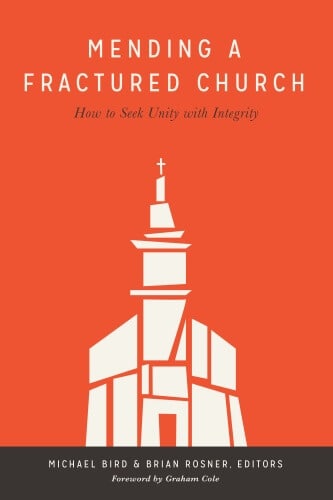The night before he was crucified, Jesus prayed for the unity of his followers.
And I do not ask on behalf of these only, but also on behalf of those who believe in me through their word, that they all may be one, just as you, Father, are in me and I am in you, that they also may be in us, in order that the world may believe that you sent me. And the glory that you have given to me, I have given to them, in order that they may be one, just as we are one—I in them, and you in me, in order that they may be completed in one, so that the world may know that you sent me, and you have loved them just as you have loved me. (John 17:20–23, LEB)
Jesus wanted his followers’ unity to be modeled after the perfect unity of the Trinity. Just as the Father is one with his Son and Spirit, so too should we who are united to Christ by the same Spirit be unified with one another. And our unity is intended to demonstrate the truth of Jesus’ claims to an unbelieving world.
Yet what does the world see when they look at the church? Sadly, they often see a church divided. It seems we can find reasons to divide over just about anything—from serious theological concerns down to the color of the pews. To the world, they’re all just more reasons not to believe..
What constitutes a legitimate reason for division? How can we work through lesser differences without separating from one another? What does it really mean for the church to have unity?
Mending a Fractured Church, published by Lexham Press and edited by Michael Bird and Brian Rosner, seeks to answer such questions, looking to the Bible for examples of how to behave when Christians differ. Speaking to pastors, churches, and seminary students, this book provides a guide to maintaining unity without compromise.
- Andrew Malone explores some of the New Testament’s teaching about differences, discussing our call to unity despite our diversity.
- Lindsay Wilson looks to Joshua 22 for a case study in conflict resolution, drawing principles from two groups that both had a right motivation in their actions.
- Brian Rosner uses Paul’s arguments in Romans 14–15 as an example of how to work through disputable matters in the church.
- Michael Bird examines the tension in the Johannine letters between loving others, especially those in the church, and holding uncompromisingly to the Christological foundation of the church’s faith.
- Rhys Bezzant argues that the existence of disputable matters within our church is a sign of health rather than sickness.
- Peter J. Leithart discusses the many segments of the Christian church today, providing several fascinating examples of Christian movements that fall outside our traditional classification system.
Mending a Fractured Church is currently on Pre-Pub. Pre-order today to save over 50%!





